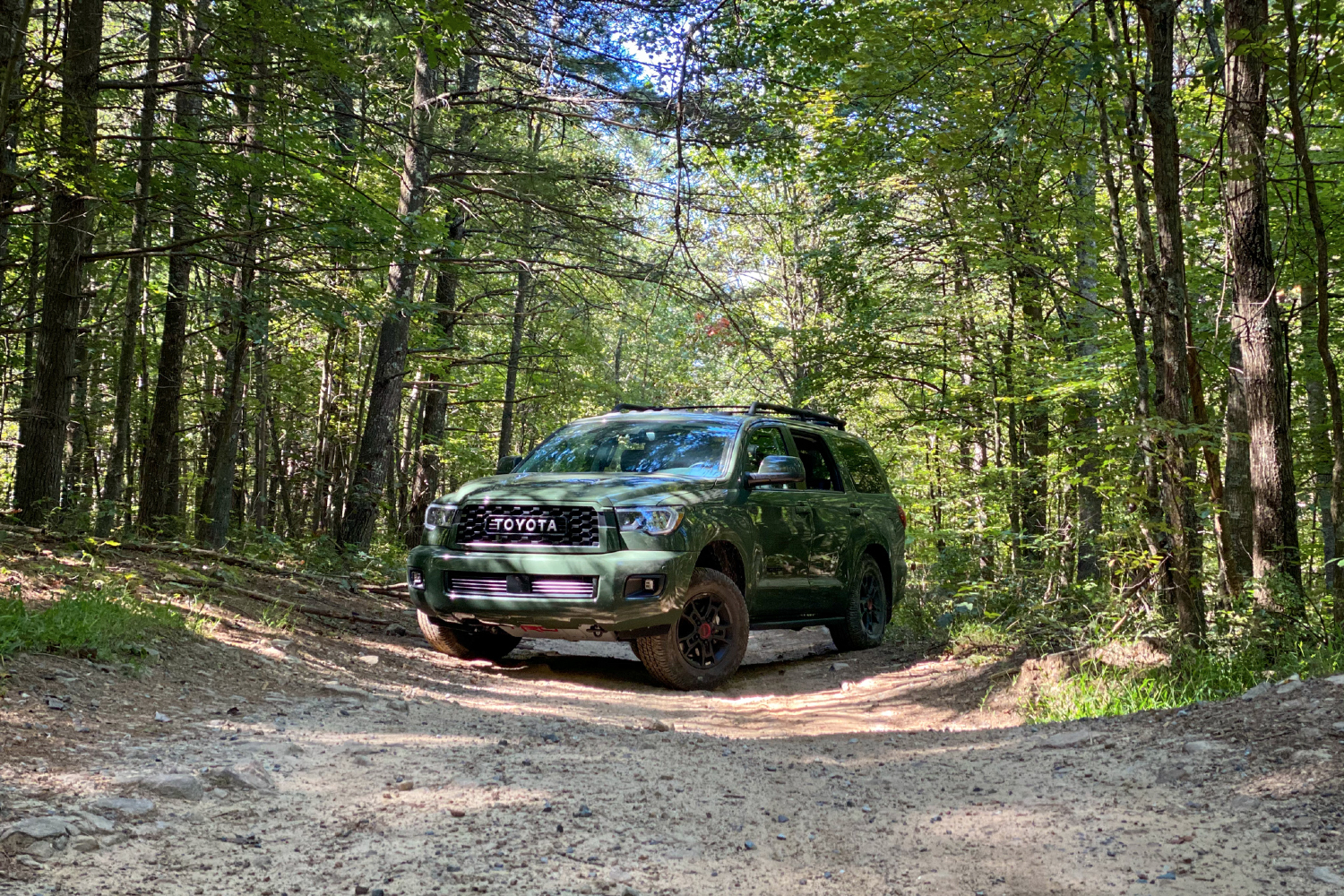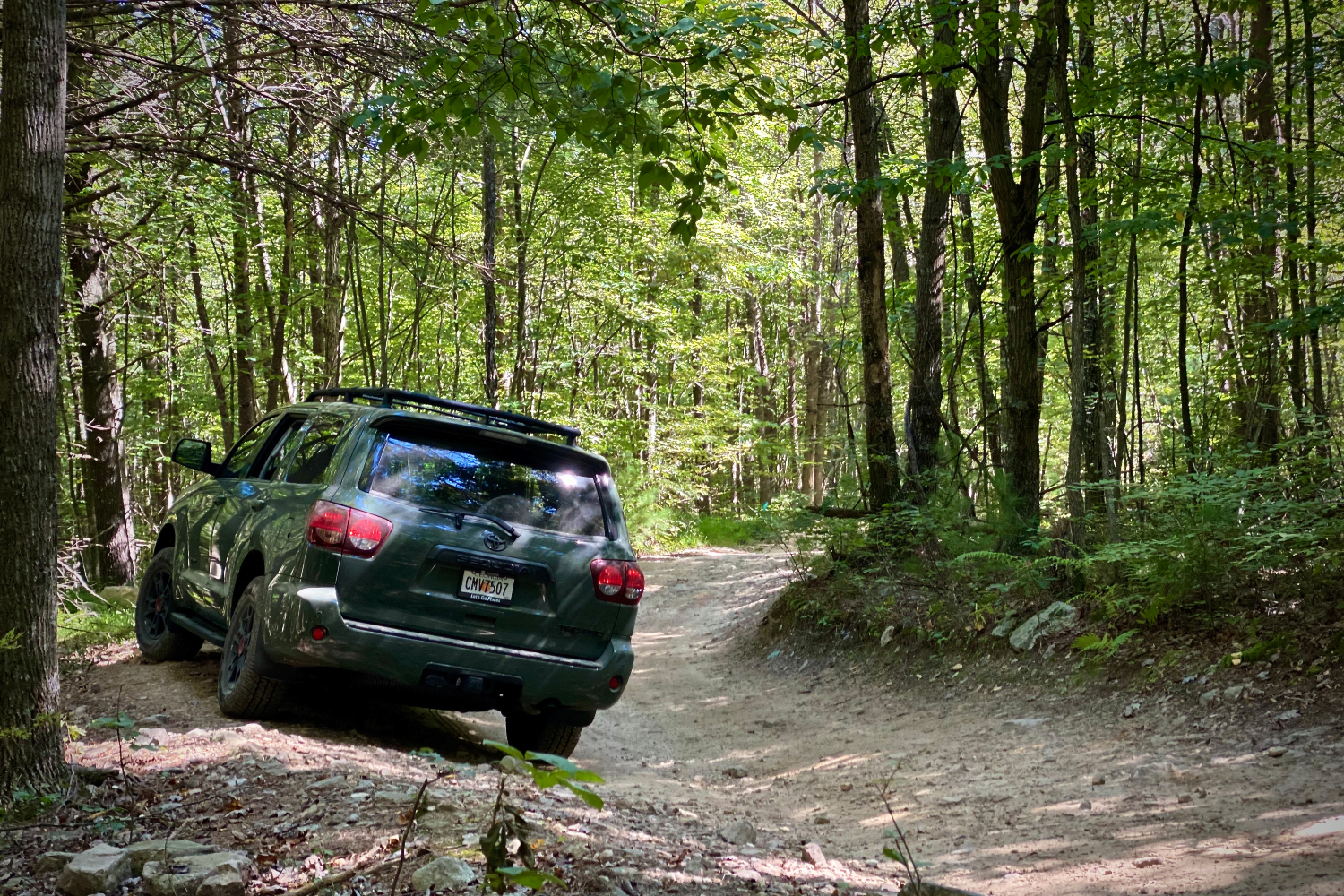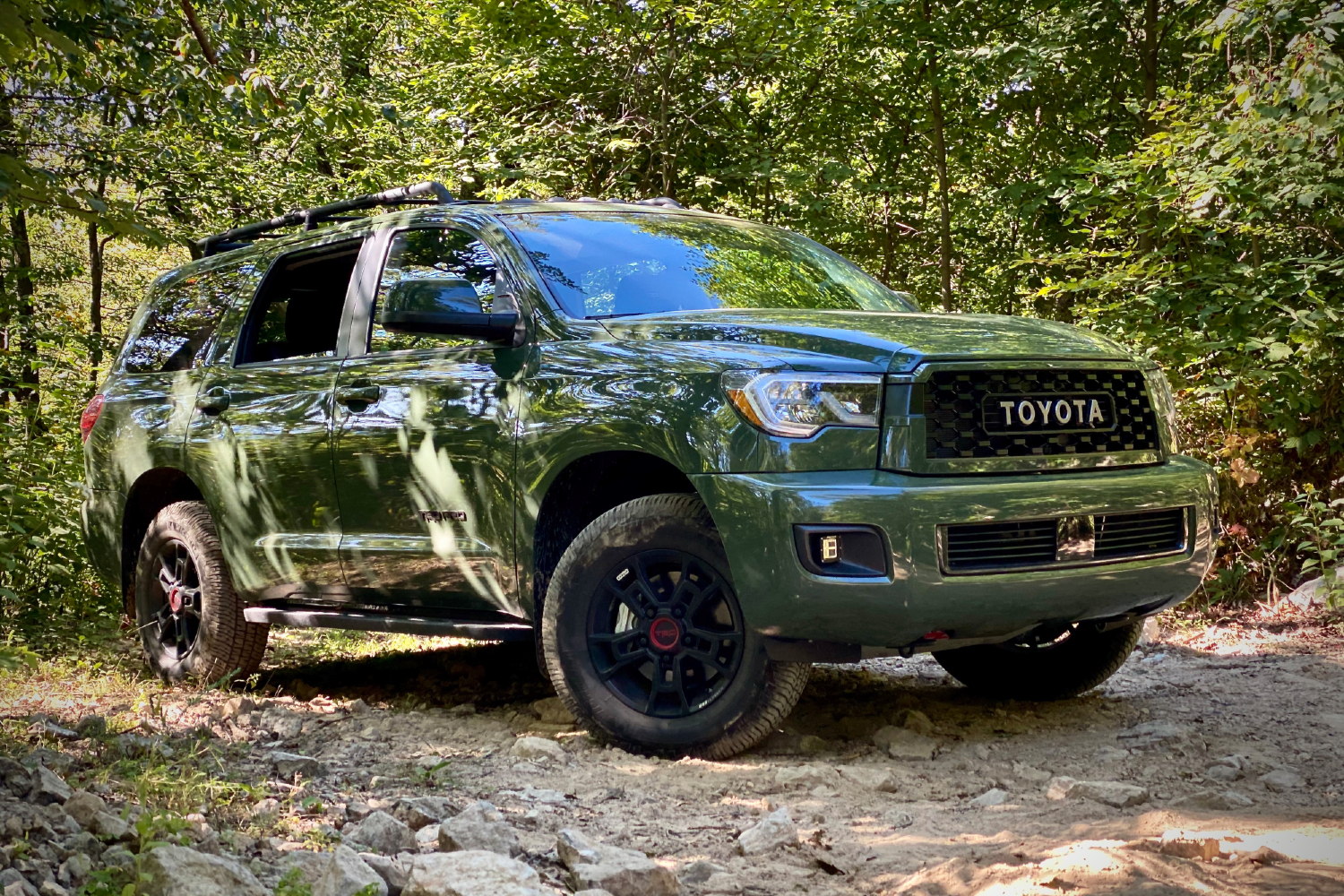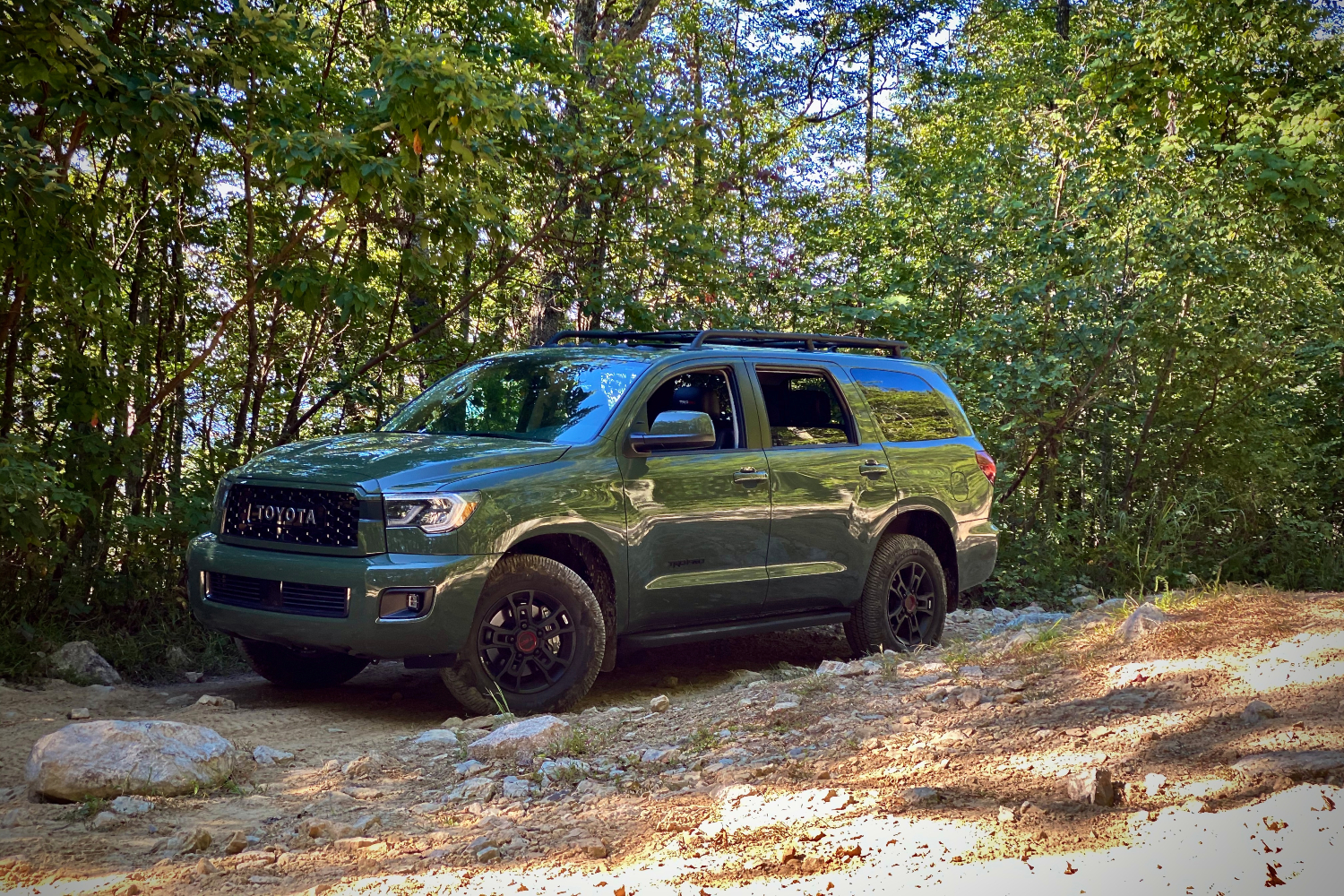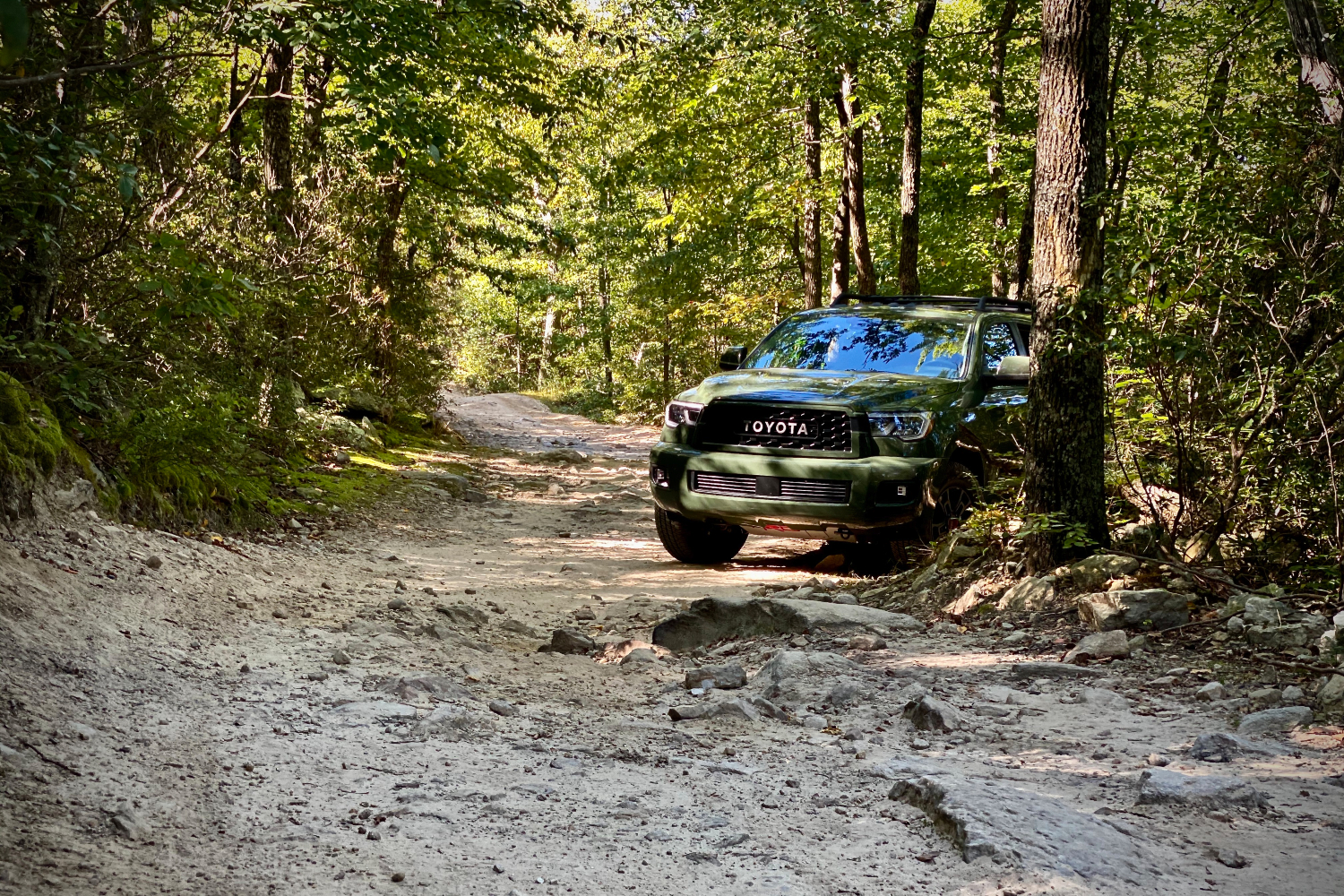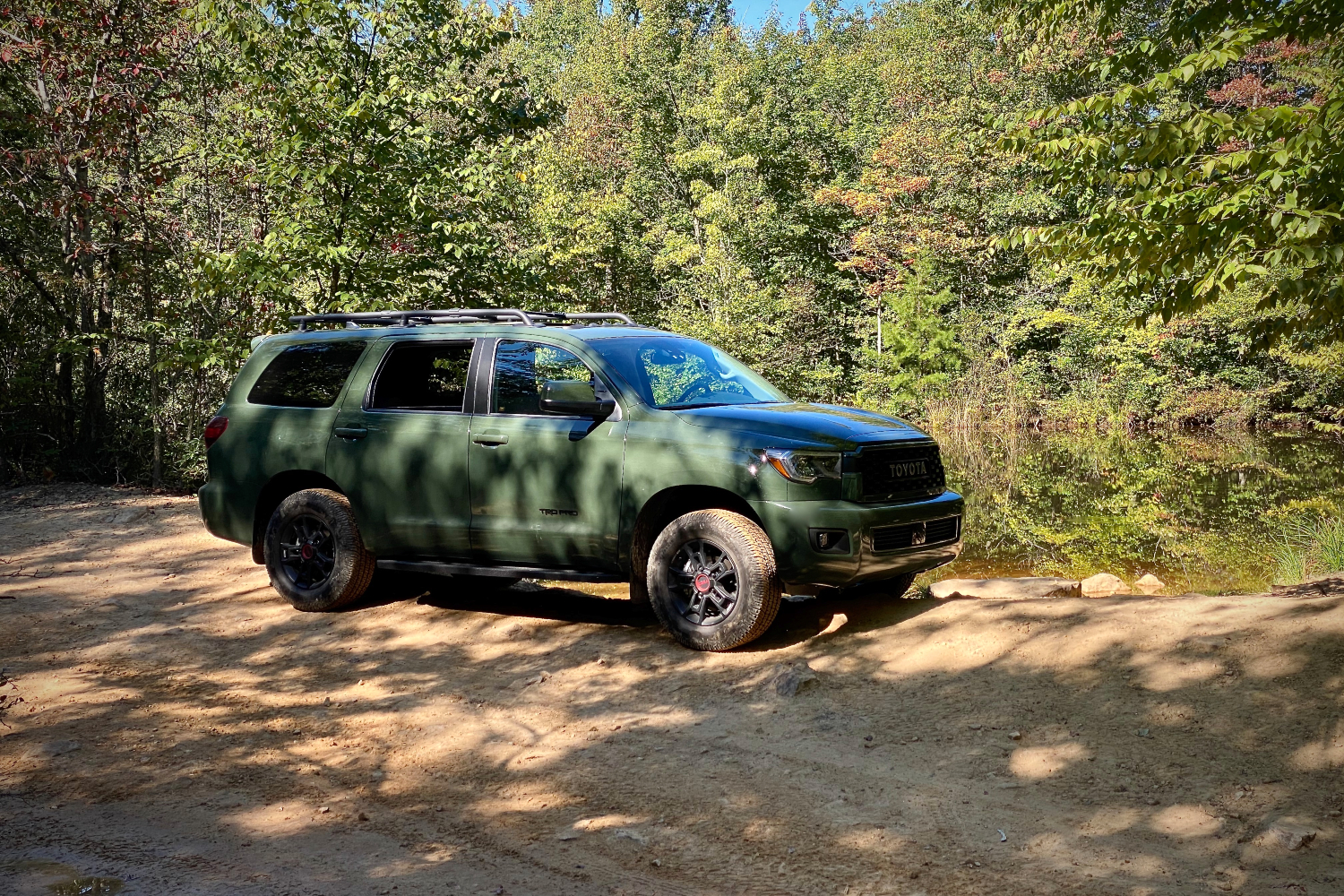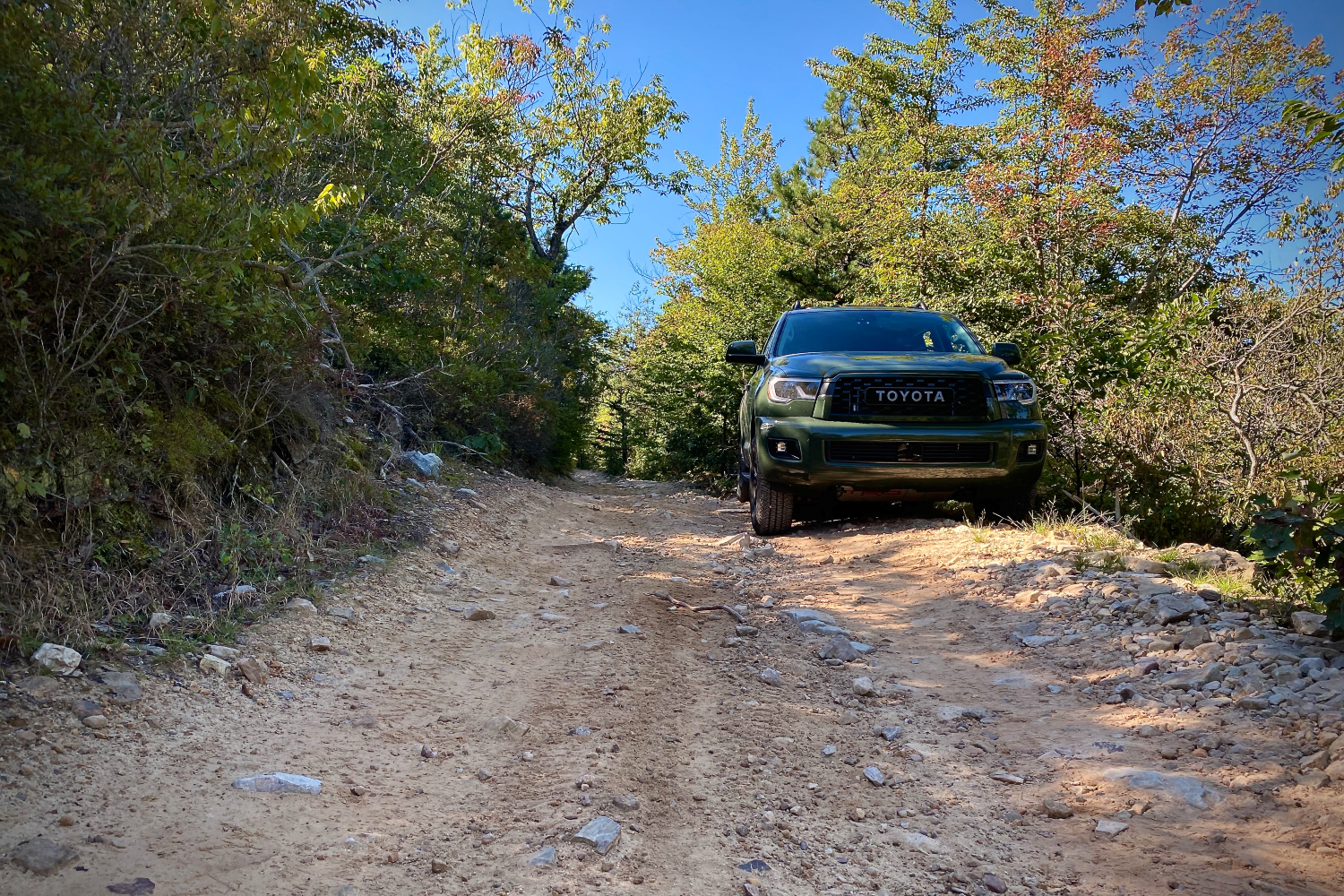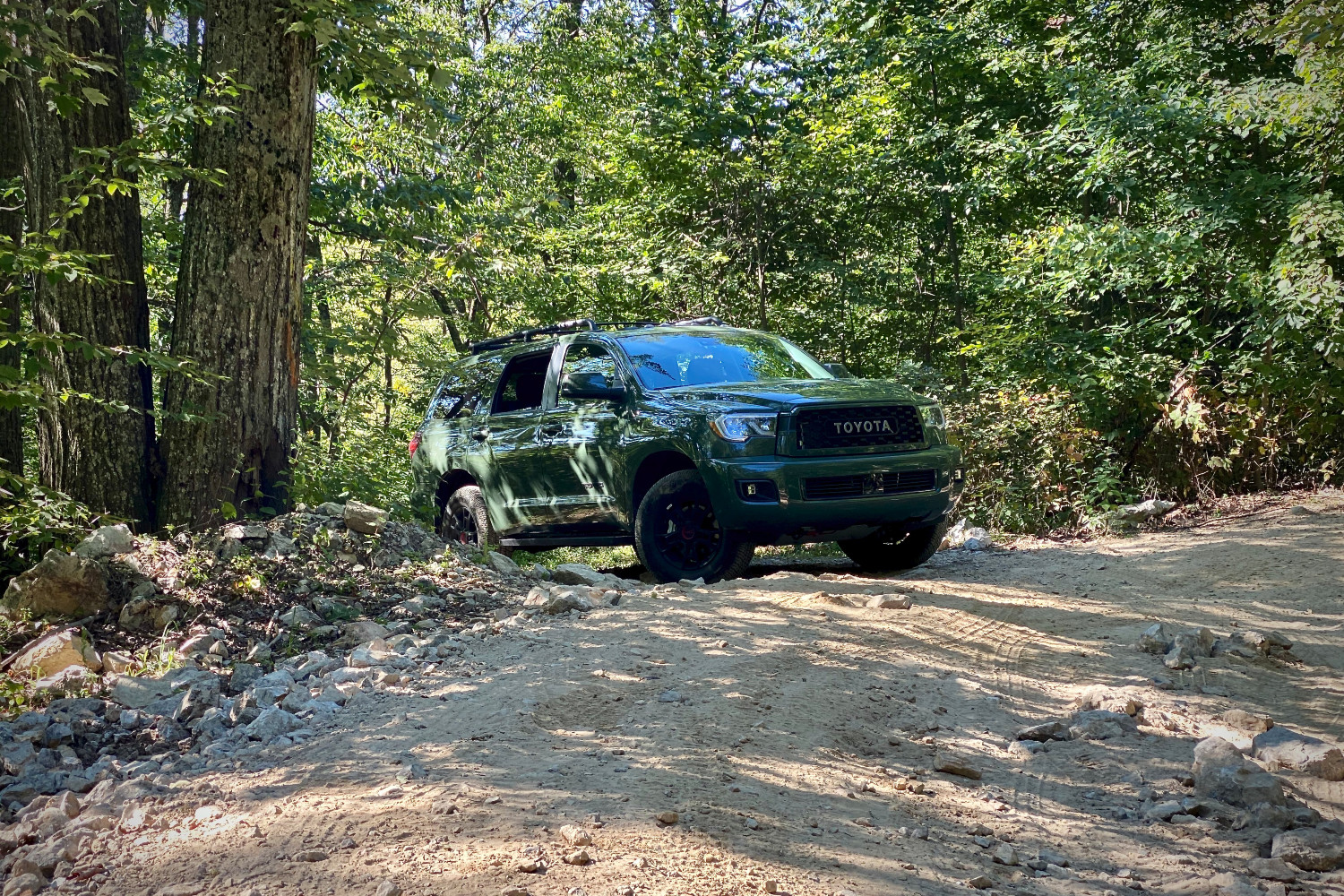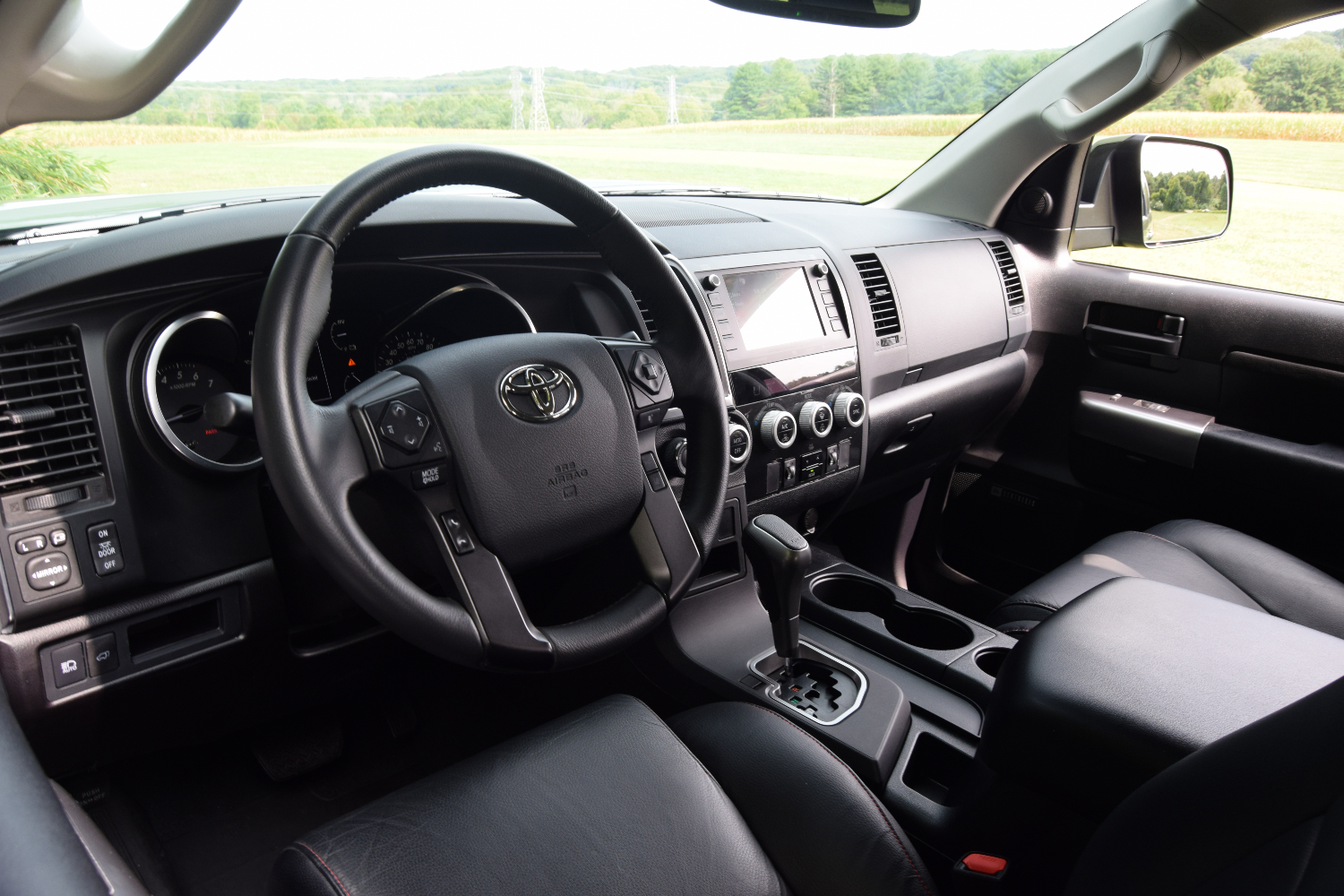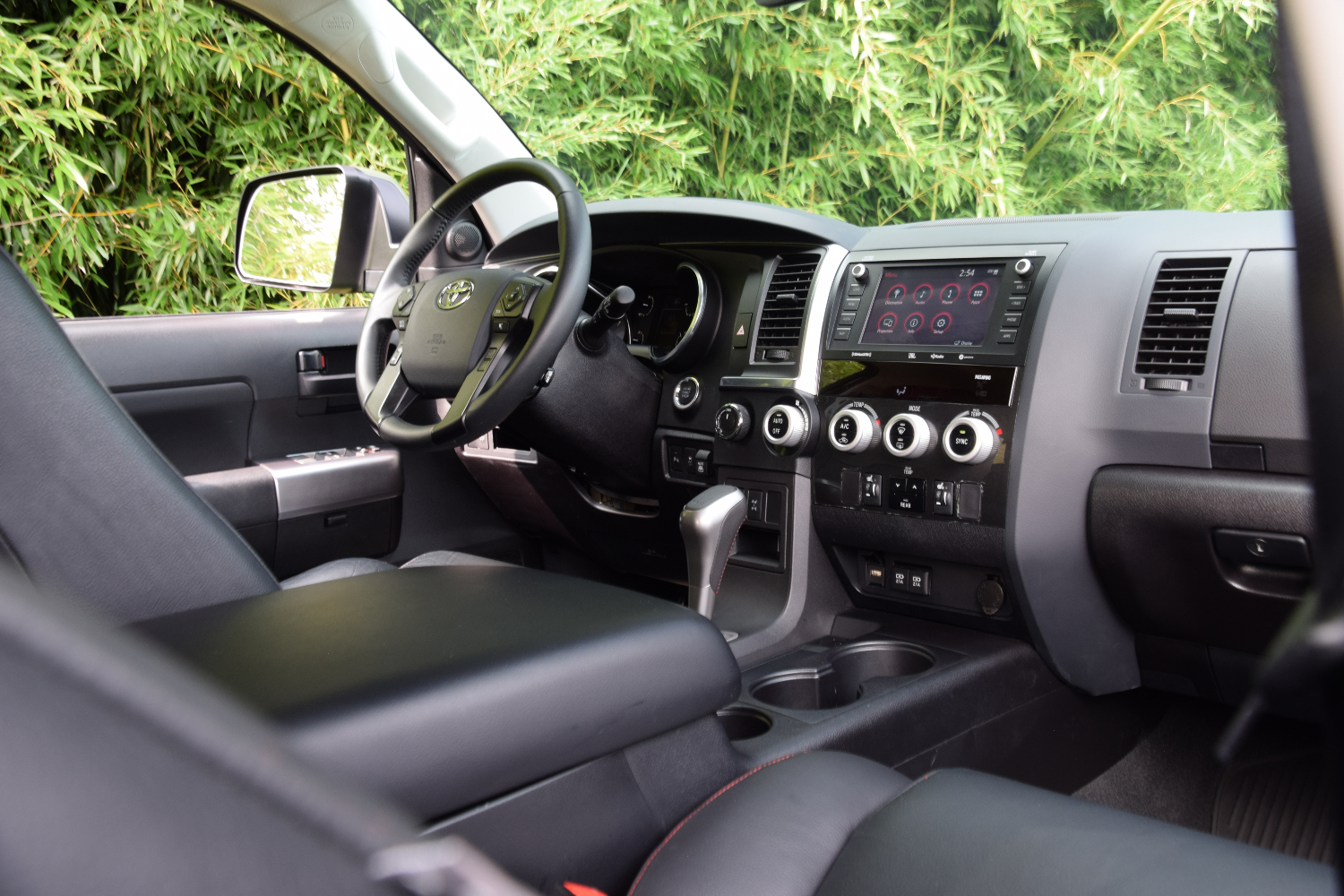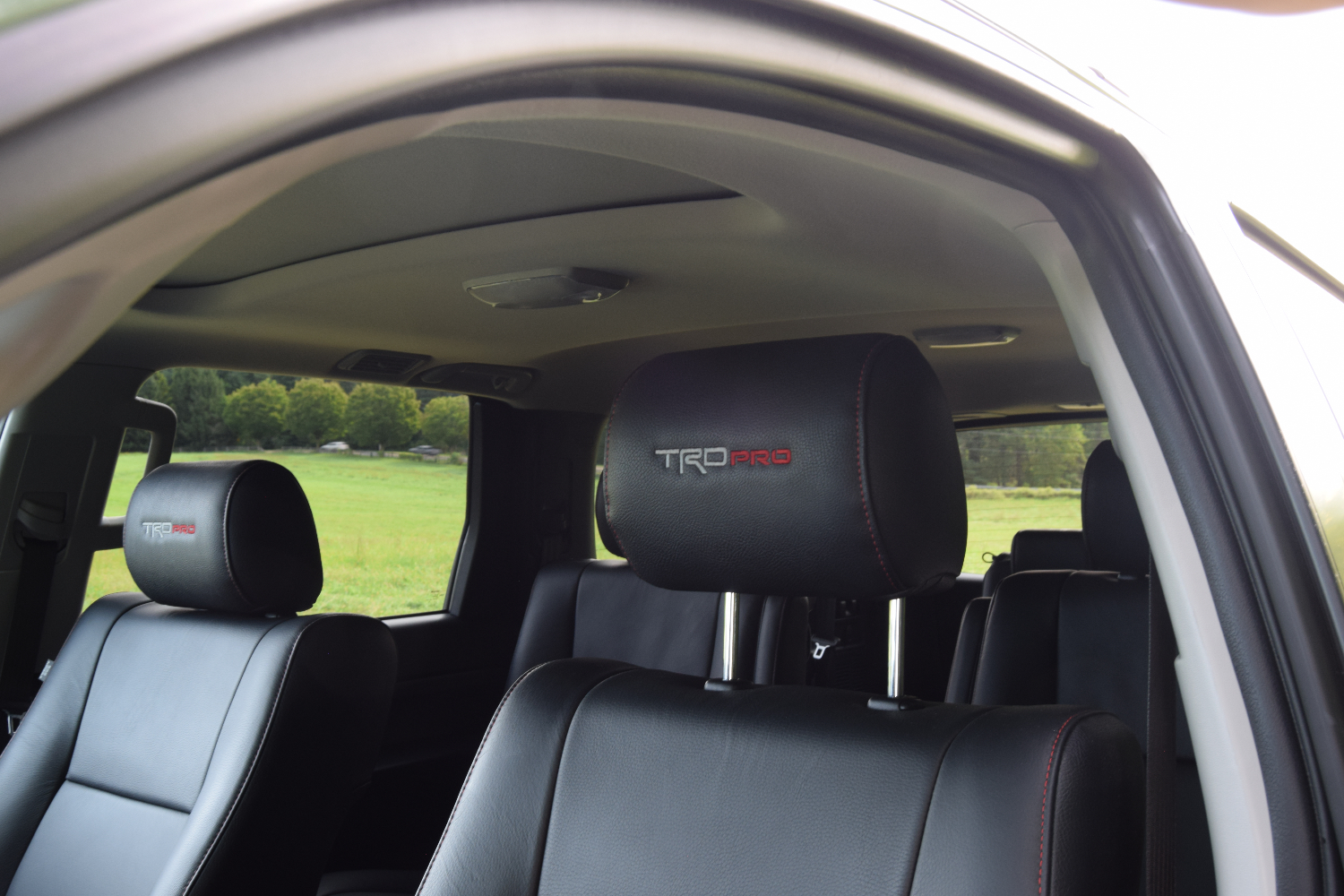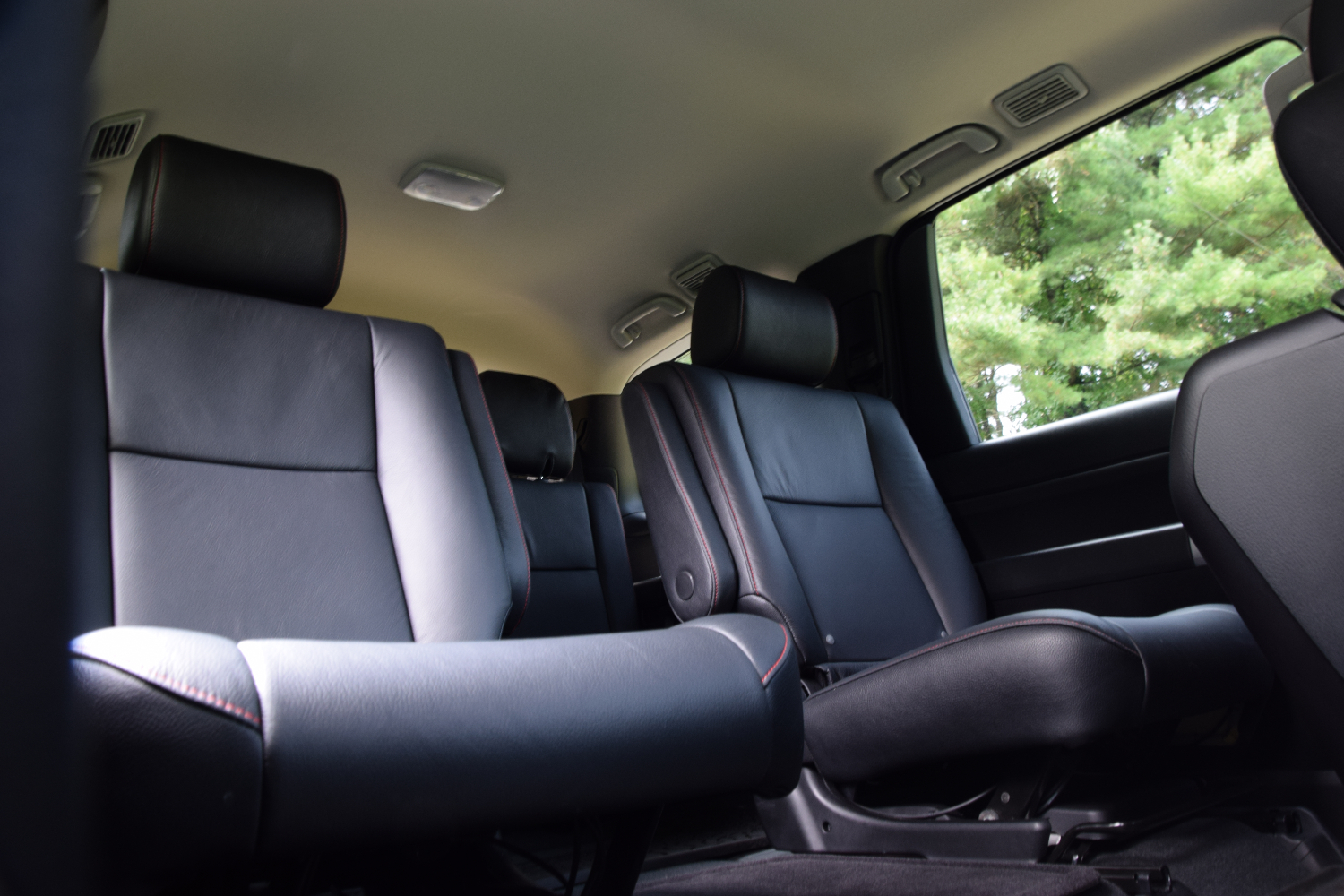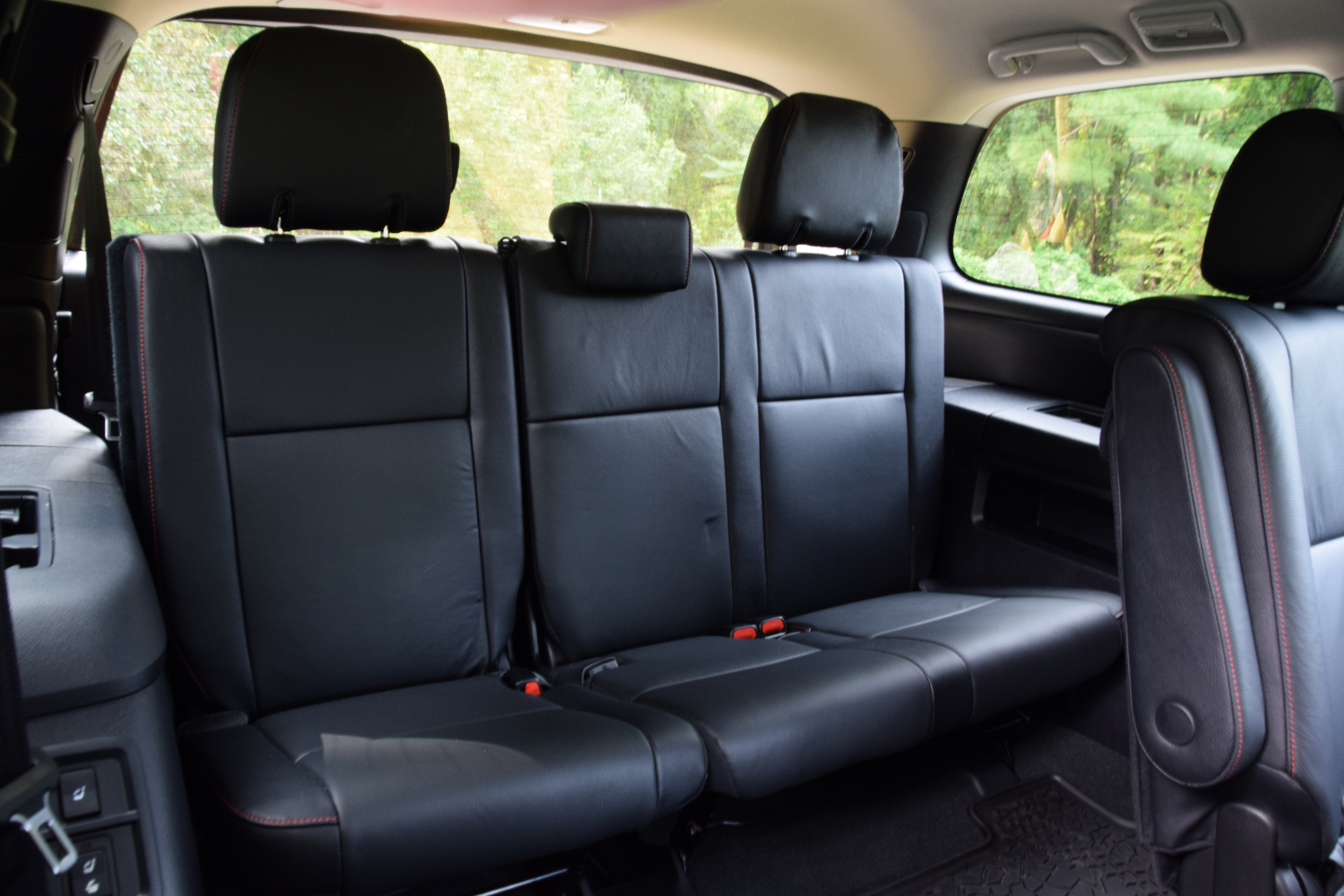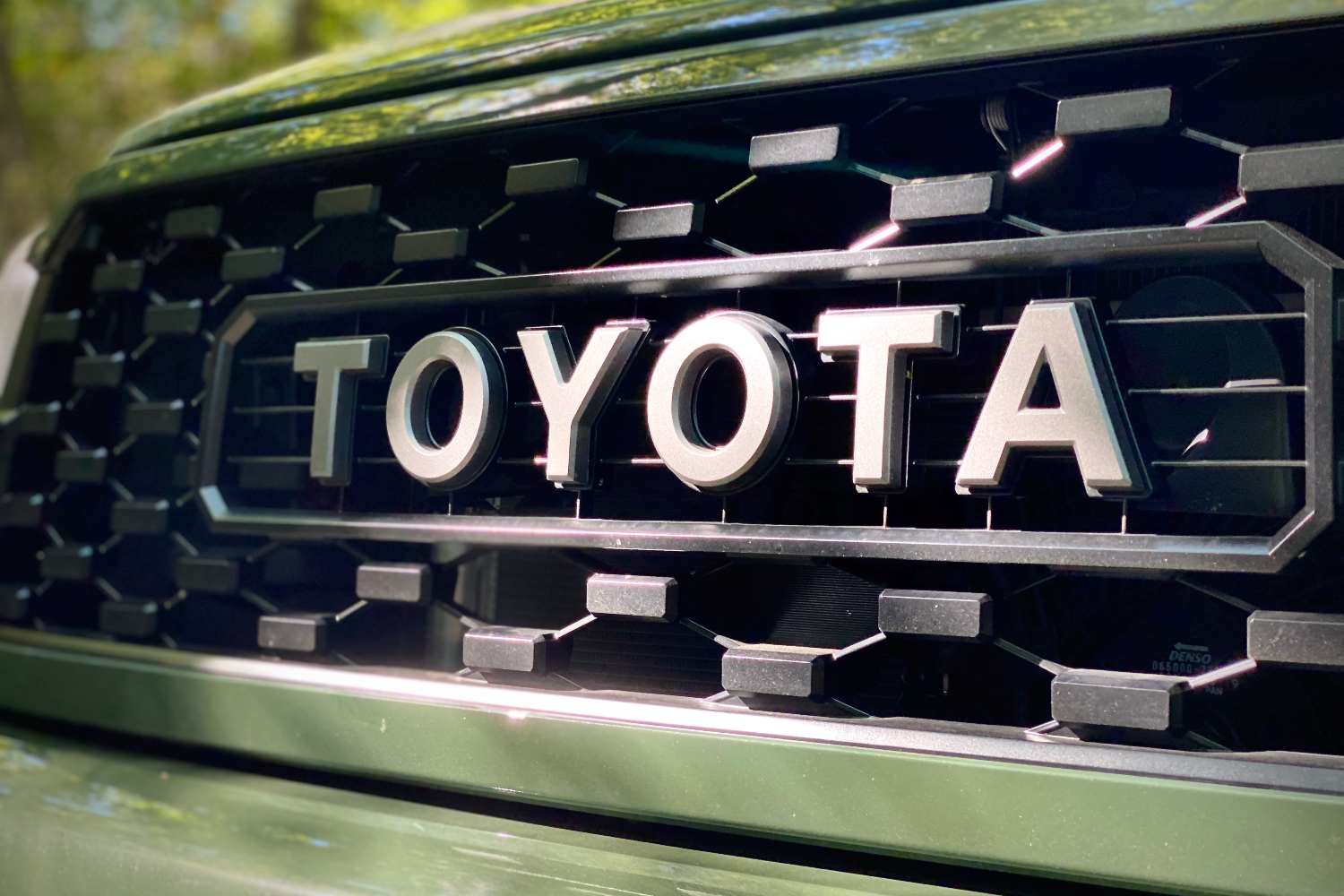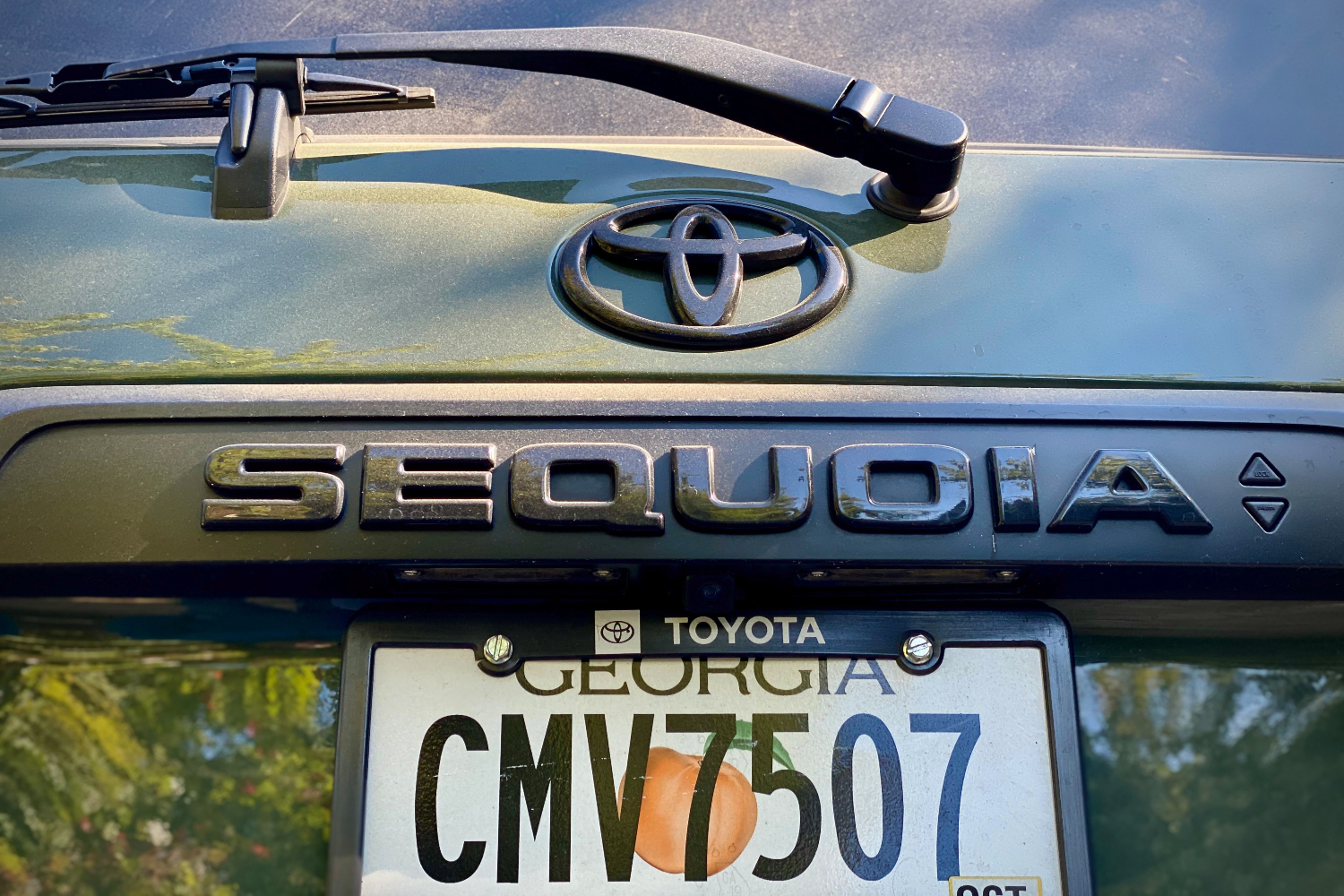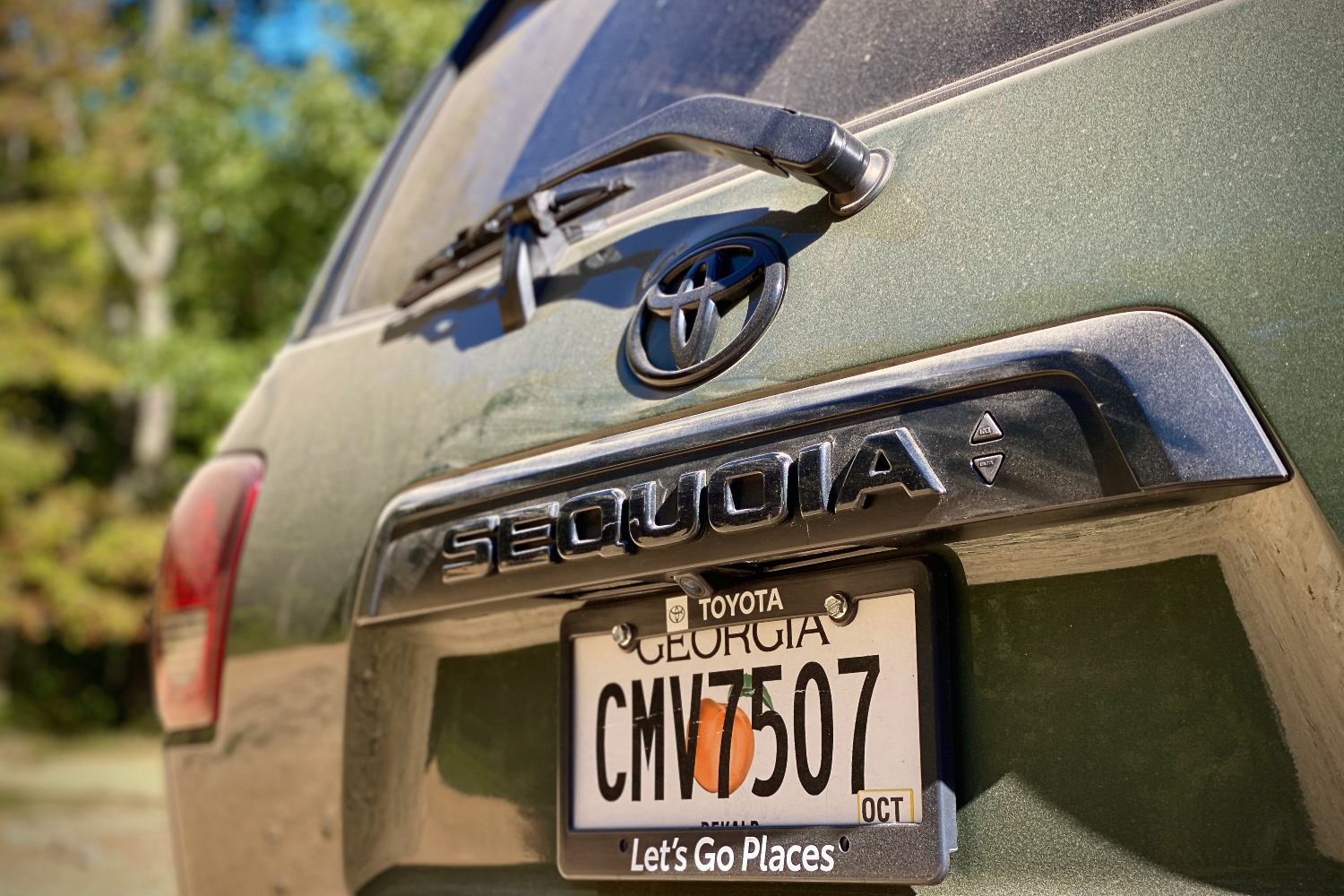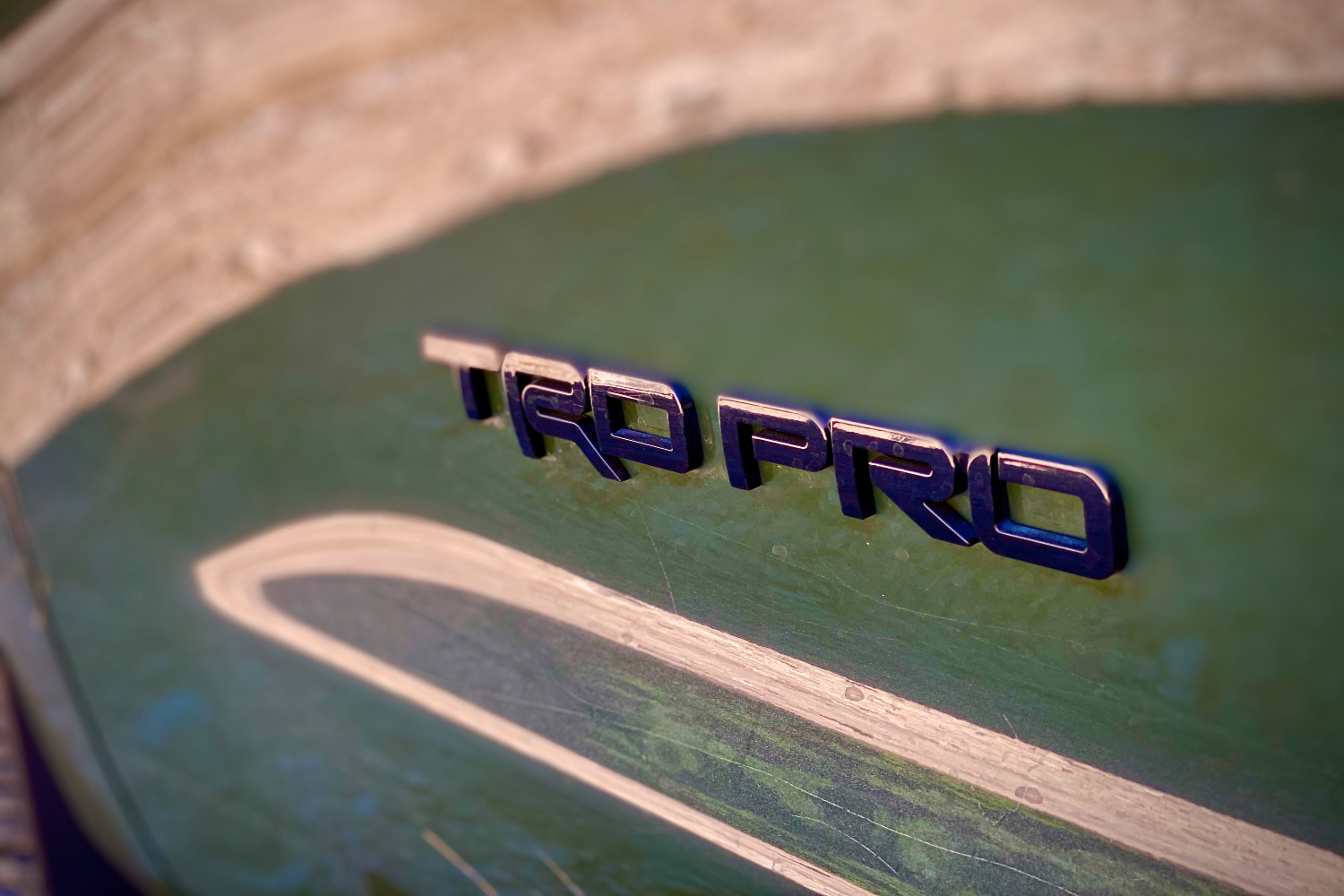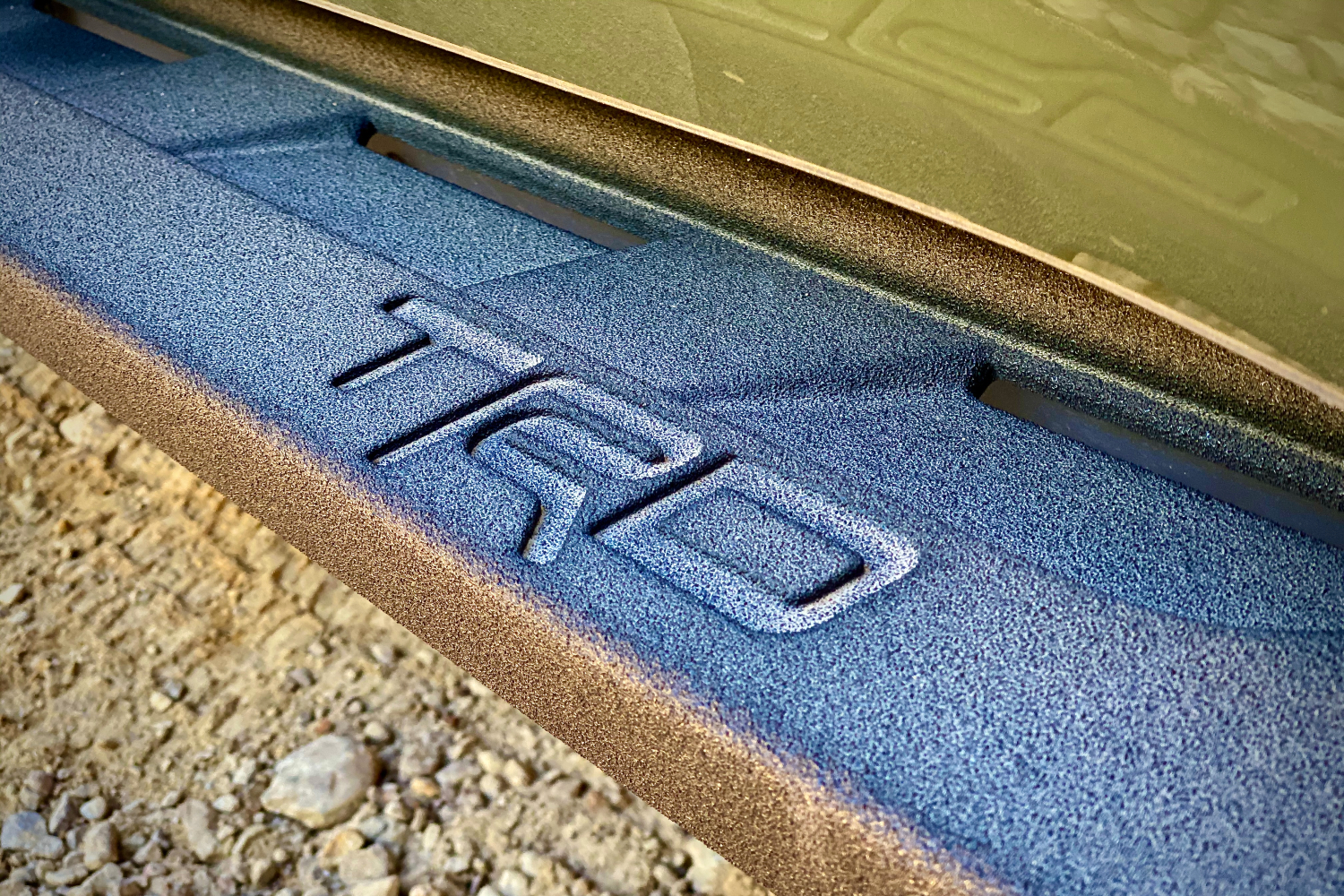The Toyota Sequoia TRD Pro doesn’t really go off-roading. It’s too big for that. Instead, it basically pulverizes rocks, dirt, and any trees in its path to get to its destination. At roughly 6,000 pounds, 205.1 inches long, and 79.9 inches wide, I wasn’t quite sure what I thought would happen when we set off down a tight trail. But, going off-roading was the original plan and there was no better way to see if the off-roading renovations Toyota made to the Sequoia had worked. It only took a few minutes to realize that a small, winding trail through a dense forest is not the best place to test the Sequoia TRD Pro.
In fact, if that’s what you plan to do with your Sequoia TRD Pro, you should look elsewhere. It’s just too big, too old, too unsophisticated. My sister, bless her heart, has never gone off-roading. Bing, a light went off in my head, and I immediately thought that a full-size SUV with seats that are similarly sized to a Lay-Z-Boy and a cushy ride rivaling a Carnival Cruise ship would be perfect for a first-timer. What it actually was, was a white-knuckle experience to try and keep the Sequoia TRD Pro on a path that was just barely wide enough to accommodate the SUV.
Toyota’s TRD Pro stamp is a rarity – saved for only the most capable off-roaders that have been combed over with tried-and-true performance parts. Currently, there are only four TRD Pro trims available with a Toyota badge. If you’re the kind of person that wants to explore the great outdoors in a full-size SUV with space for the entire family, you’re really only looking at one option: the Sequoia TRD Pro.
In automotive years, which are exponentially quicker than ones for TV shows, the Sequoia has been around for a lot longer than its own good. The last time the Sequoia was redesigned was 12 years ago in 2008 when Breaking Bad premiered on AMC. Some people, all of whom are wrong, think the show went on for too long, but it was only on the air for five years. After a much longer 12 years, there’s a general consensus that the Sequoia’s been on sale for far too long. It’s The Walking Dead of SUVs.
Doing what anyone else would to keep a model fresh, Toyota dug into its parts bin to introduce a potent TRD Pro trim. Toyota seems to have perfectly timed the release of the Sequoia TRD Pro to line up with the off-roading, overlanding mania that’s going around. If the 381-horsepower V8, six-speed automatic transmission, fuel economy figures, interior, and exterior design are ancient, what’s new with the TRD Pro trim?
Well, it’s a bunch of stuff you can’t see and won’t really appreciate unless you plan to go off-roading. Front and rear Fox shocks, a heavy-duty skid plate, a cat-back exhaust, 18-inch BBS wheels, Michelin all-terrain tires, and Rigid fog lights are included. The 2020 model also comes in Army Green, one of the best colors on the market. Interestingly, the rest of the hardware and software are untouched. So, the four-wheel-drive system remains the same and there’s the same limited-slip differential. Unlike the 4Runner TRD Pro, the Sequoia misses out on Multi-Terrain Select and Crawl Control.
Beyond its physical size, we quickly ran into an issue on the trail. On a relatively steep incline with 4HI engaged, the Sequoia TRD Pro spun its wheels as it searched for traction. With a patient approach of traveling down the hill in reverse for a bit and then choosing a slightly better route, we made it past our first obstacle than occurred within the first five minutes of venturing off tarmac. Once at the top of the hill, we checked tire pressures. At 36 psi on all four corners, the tires were well above the recommended pressure of 30 psi. We lowered them to the right amount and set back off.
Without Hill Descent Control, Crawl Control, or Toyota’s Multi-Terrain Select system, going is tough and slow. We’re mostly relying on a steady right foot, traction control, and choosing good routes. With 10 inches of ground clearance, there aren’t too many rocks that give us cause for concern, but branches, boulders, and other natural fauna that make the trail narrower are more than just annoyances, they’re deal-breakers. Hit one of them, and you’re left staring at a gash along the entire side of the body. Better just to take your time to get out of the SUV and check clearances before moving forward.
We do that often. Mercifully, without much traffic, we make it through the Tasker’s Gap trail in less than two hours, much quicker than our time in the Toyota RAV4 Off-Road. Beyond a slight hiccup every now and then, as the Sequoia TRD Pro struggles to find traction over a large rock, leaving its body creaking, swaying violently, and moaning for smoother terrain, it’s comfortable, but slow going. Having the skid plate at the front helps immensely, as do the suspension updates, but the Sequoia TRD Pro is really pummeling the terrain, bending it to its will, not necessarily tackling it with grace.
Once the terrain evens out, and rock gives way to uneven dirt, the Sequoia TRD Pro feels more content. This is the kind of stuff it could tackle all day. And in this sense, the SUV finally starts to make sense. If you’ve got the family with you and a dog in the back, who will certainly enjoy the power window in the tailgate, it’s hardly unlikely you’ll be hitting a trail. Instead, you’ll probably be out, searching for a camping spot to get away from the bustle of regular life. Providing you can find a campsite or path that’s wide enough, the Sequoia TRD Pro will get you there just fine, while the Army Green paint job will make you feel like you’re part of the Ninja Turtles.
